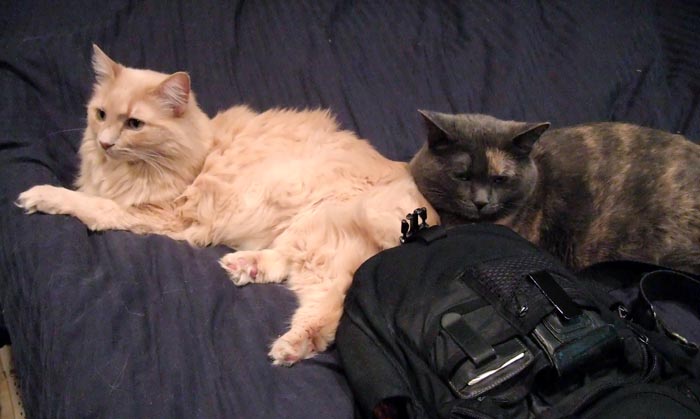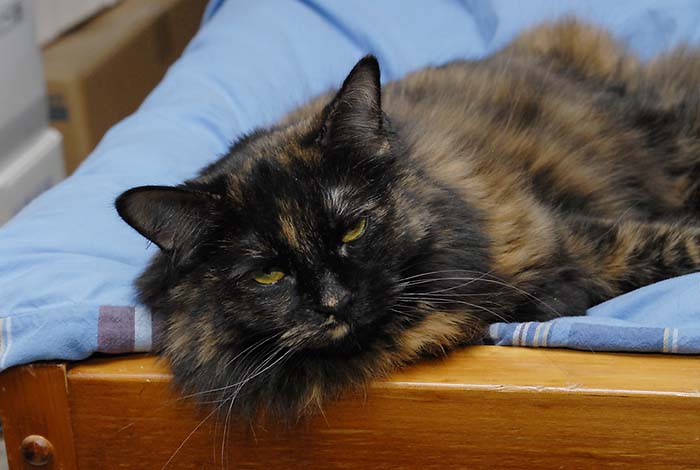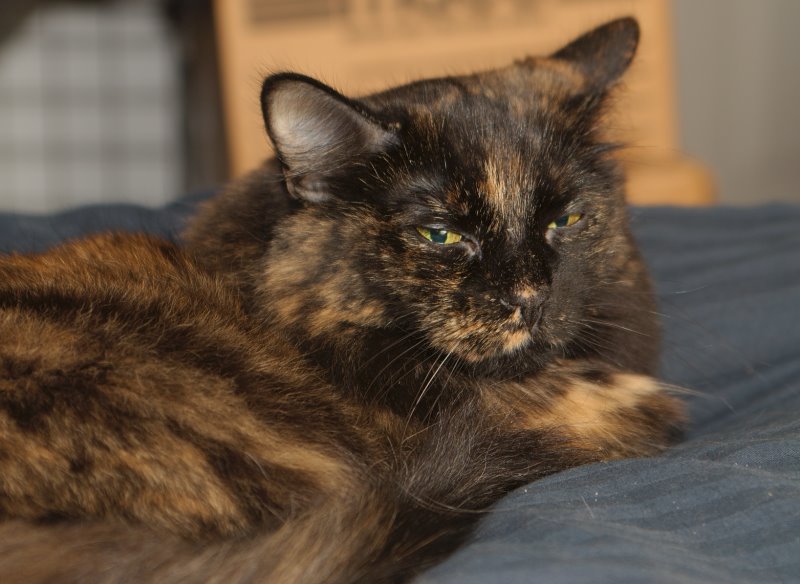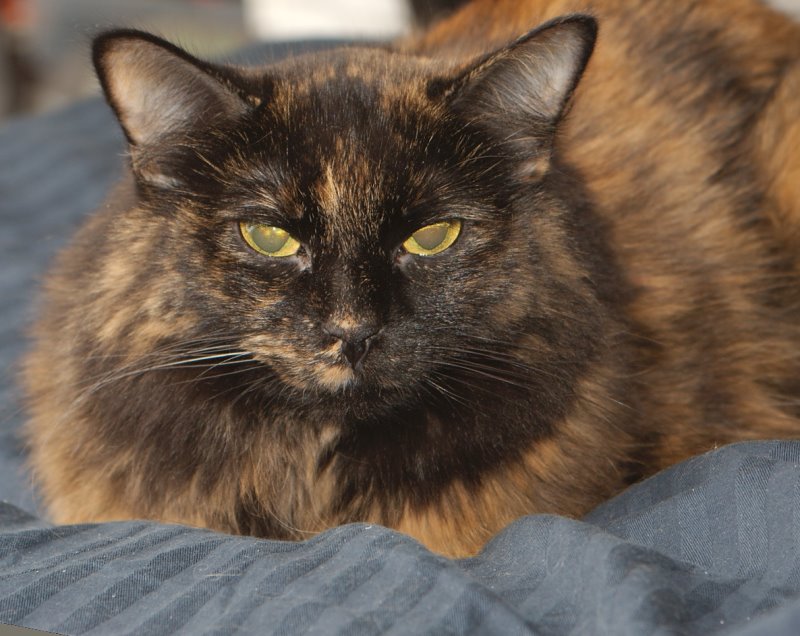But I’ve rigged a couple of simple things to provide better lighting on my bed. That’s the main flat space in my room, and has been used for “tabletop” photography many times in the past (Ebay pictures and such). Also, many of the interesting but technically troubled kitten pictures of the last few years have been taken there.
The lighting in that location was mostly from recessed fixtures in the ceiling, with incandescent bulbs. So the light was hard, straight down, and uneven. Plus a funny color (and worst-case for the blue background that’s often there). So lots of the photos were not so wonderful, either directly because of that lighting, or because I resorted to direct flash instead.
Yes, this is why there has been a rush of cat pictures the last few days.
There were two main ideas that had to come together to make this happen.
First, I had the idea of putting something light-colored over the bookcase whose back is to the bed on that side. Currently my white terry-cloth bathrobe is hanging there, but if I decide this is useful enough to keep I’ll put white paper of some sort up there.
 Second, I realized I had those pipes up there that could certainly support a small flash unit. A small flash unit, triggered with a slave module, and bounced off the back of the bookcase, would give me a large, soft, directional light source illuminating the surface of the bed fairly nicely.
Second, I realized I had those pipes up there that could certainly support a small flash unit. A small flash unit, triggered with a slave module, and bounced off the back of the bookcase, would give me a large, soft, directional light source illuminating the surface of the bed fairly nicely.
I started this using my SB-800. I tried using CLS to control it, which resulted in another article. Then I found that MU-4 mode (for my purposes, just using the built-in slave) worked fine.
At which point I realized that I had an old Vivitar strobe, an old Wein peanut slave that had never worked right before, and a decent clamp even. So I put them together, and was startled to find the slave working 100.00% now. It worked so well that it reliably triggered on the pre-flash when I set the D200 flash in iTTL mode, even. I don’t know why it works so well now; maybe being up in the air and pointed at a large white surface helps. Before I was trying to use it to control lights shooting into or through umbrellas, which may have given the slave a much less good sample of the flash it was supposed to trigger on.
That little slave (I’m not sure that’s actually the right model name, I’ve had it for decades) is a cool retro bit of engineering—simple metal shapes, a small circuit board (the back of which also forms the hot-shoe flash contacts), a PC socket if you don’t want to use the hot-shoe, and it will mount in a flash shoe or on a ¼-20 tripod screw. And I’ve finally found a useful place for it.
So, how do the results stack up? Well, selecting just a few samples is always prone to introducing bias, but then this is a self-published web article, not a scientific study that I hope to get published in a peer-reviewed journal.
Overhead Lights
Bounced Flash
So you’ll probably be subjected to even more cat pictures over the next few weeks, though I suppose you get a break while I’m away the end of this week.







